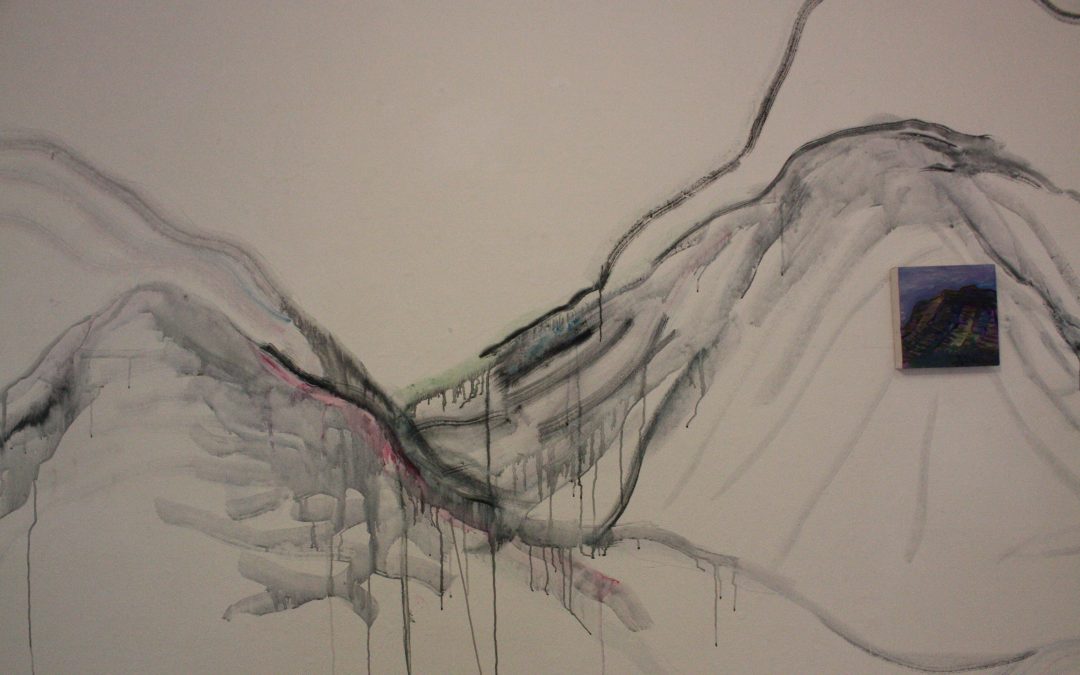 Becoming a Shape of a Land(Scape) 5/8 – 7/8/2020 OUTVERT ART SPACE, Ísafjörður, Iceland “In the Westfjords I wonder, what is a land, what is a landscape? Is it just a soil we are walking on? The terra is taken as a fixed entity, as a solid background, a nicely folded curtain of the play. Grasping these enchanting layers, veins, and wrinkles of the mountainous space, I sense intensely here that the Earth is a moving, shaping, breathing being. The scenery is so spectacular here, that it makes me humble, and very tiny. I “monsterize” the shape of the land, I deconstruct its shape and then recreate the forms by drawing, layering memories, as a dream. The stain becomes an important mark as an intended line: „While touch offers the sensation of tactility on the surface, stain provides the seepage, leakiness, and bodily presence of the medium itself.“ (Kenner 2017:101) Colors affected by the summer light, haziness by the clouds. Mythical animals sneak in from the Icelandic folktales. I animate the Earth as an uncertain form of becoming, constantly changing the shape, wobbling as a tongue, changing its state, never still, as a clay. The landscape becomes an abstract shape, becomes a creature.” Britta Benno (1984) is a drawing and printmaking artist living and working in Tallinn, Estonia. She is interested in various techniques and materials and the new perspectives that appear when they are contrasted and combined. Benno graduated with bachelor’s and master’s degrees from the printmaking department at the Estonian Academy of Arts. Currently, she is studying in a doctoral school at the Estonian Academy of Arts,...
Becoming a Shape of a Land(Scape) 5/8 – 7/8/2020 OUTVERT ART SPACE, Ísafjörður, Iceland “In the Westfjords I wonder, what is a land, what is a landscape? Is it just a soil we are walking on? The terra is taken as a fixed entity, as a solid background, a nicely folded curtain of the play. Grasping these enchanting layers, veins, and wrinkles of the mountainous space, I sense intensely here that the Earth is a moving, shaping, breathing being. The scenery is so spectacular here, that it makes me humble, and very tiny. I “monsterize” the shape of the land, I deconstruct its shape and then recreate the forms by drawing, layering memories, as a dream. The stain becomes an important mark as an intended line: „While touch offers the sensation of tactility on the surface, stain provides the seepage, leakiness, and bodily presence of the medium itself.“ (Kenner 2017:101) Colors affected by the summer light, haziness by the clouds. Mythical animals sneak in from the Icelandic folktales. I animate the Earth as an uncertain form of becoming, constantly changing the shape, wobbling as a tongue, changing its state, never still, as a clay. The landscape becomes an abstract shape, becomes a creature.” Britta Benno (1984) is a drawing and printmaking artist living and working in Tallinn, Estonia. She is interested in various techniques and materials and the new perspectives that appear when they are contrasted and combined. Benno graduated with bachelor’s and master’s degrees from the printmaking department at the Estonian Academy of Arts. Currently, she is studying in a doctoral school at the Estonian Academy of Arts,...
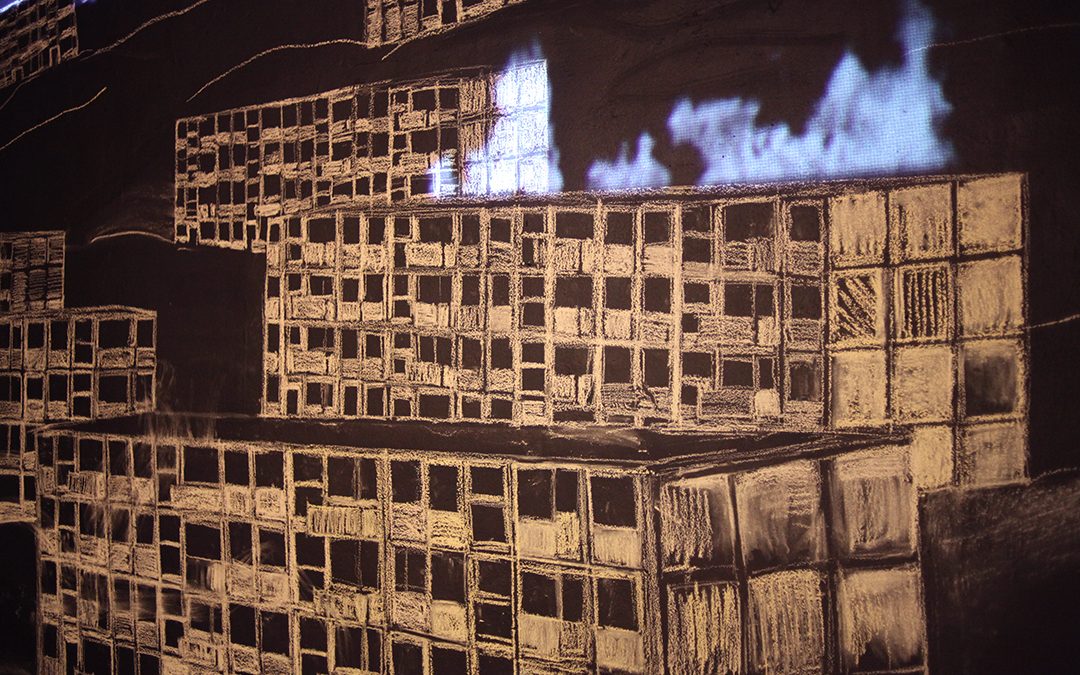 Britta Benno & Heather Beardsley Oli mul kord … / Once I Had … 15/10/2019 – 13/11/2019 Kraam artist-run space 15/10/2019 Artist-talk 6 pm Vernissage 7 pm The exhibition’s title, Once I Had…, refers to the transience of possession, convenience of over-consumption and other self-destructive implications of human behavior on the future of Earth. Once I Had.. is a conceptual continuation of Britta Benno recent solo exhibition „Dystopic Tallinn“. In this project the apocalyptic landscape scenery is site-specifically depicted with the Mustamäe district’s panel houses, as they are located in the vicinity of the artist run-space Kraam. Benno invited American artist Heather Beardsley to this project, as they met while during an artist residency in Vienna, where they were coincidentally both depicting dystopian landscapes. The works relate not only through imagery, but also materially and technically. There are many common links between the two artists: Benno and Beardsley both use nostalgic found objects, collage-like layering, printmaking and transfer methods, and inconvenient materials combinations. Benno draws, prints or animates water or fire on her dystopian landscapes, Beardsley sews or embroiders volumetric flora on top of photographic cityscapes. Benno: „Life in Mustamäe has been lasting for thousands of years. /…/ It has been digged up pieces of undecored cheramics from the dune sand, that has came probably from aboriginal campfire site.“ Once I had a flat in Mustamäe. In the far distant posthuman future the only reminder of this once safe urban district are sparsely scattered panel houses. The Mustamäe territory has transformed into a dreamy mountainous landscape. Future creatures use the blockhouses as shelters. And the Earth is on fire....
Britta Benno & Heather Beardsley Oli mul kord … / Once I Had … 15/10/2019 – 13/11/2019 Kraam artist-run space 15/10/2019 Artist-talk 6 pm Vernissage 7 pm The exhibition’s title, Once I Had…, refers to the transience of possession, convenience of over-consumption and other self-destructive implications of human behavior on the future of Earth. Once I Had.. is a conceptual continuation of Britta Benno recent solo exhibition „Dystopic Tallinn“. In this project the apocalyptic landscape scenery is site-specifically depicted with the Mustamäe district’s panel houses, as they are located in the vicinity of the artist run-space Kraam. Benno invited American artist Heather Beardsley to this project, as they met while during an artist residency in Vienna, where they were coincidentally both depicting dystopian landscapes. The works relate not only through imagery, but also materially and technically. There are many common links between the two artists: Benno and Beardsley both use nostalgic found objects, collage-like layering, printmaking and transfer methods, and inconvenient materials combinations. Benno draws, prints or animates water or fire on her dystopian landscapes, Beardsley sews or embroiders volumetric flora on top of photographic cityscapes. Benno: „Life in Mustamäe has been lasting for thousands of years. /…/ It has been digged up pieces of undecored cheramics from the dune sand, that has came probably from aboriginal campfire site.“ Once I had a flat in Mustamäe. In the far distant posthuman future the only reminder of this once safe urban district are sparsely scattered panel houses. The Mustamäe territory has transformed into a dreamy mountainous landscape. Future creatures use the blockhouses as shelters. And the Earth is on fire....
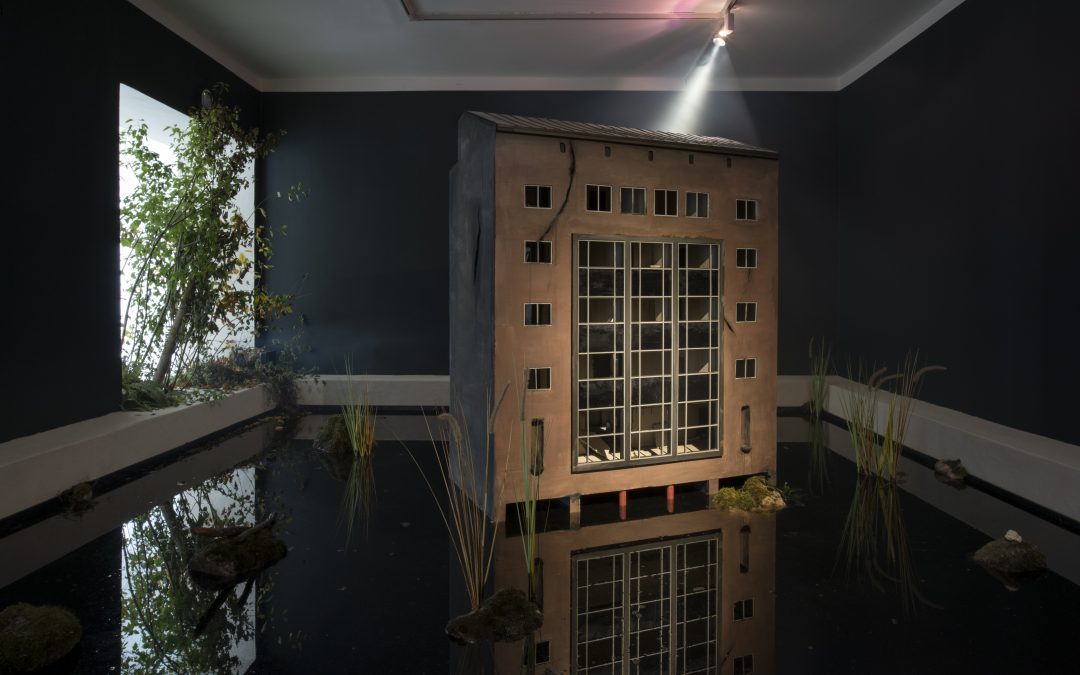 20.06–11.08.2019 Britta Benno. Dystopic Tallinn Curator: Siim Preiman ART HALL GALLERY Vabaduse Väljak 6 Tallinn Exhibition From 20 June, Britta Benno’s solo exhibition “Dystopic Tallinn” will be open at the Art Hall Gallery, where the artist will attempt to depict a distant future. The exhibition is like a treasure trove of paintings, prints and an installation, the valuables and depictions of which tell a fragmentary story of impending ruin. The curator of the exhibition is Siim Preiman. The exhibition will be opened on Wednesday, 19 June at 6pm and remain open until 11 August. There has been an increase in the number of reports about human-made climate change in the media. Worldwide, scientists are calling on people to take radical steps because the darkest scenarios predict fatal consequences already by the end of this century. Britta Benno’s vision of our hometown is not futuristic idealism with high-rise buildings nor the optimism of the nuclear age with flying cars, but instead a pessimism more suited to the Anthropocene with crumbling buildings and flourishing vegetation. In her essay, the artist writes, “I believe in nature, plants and animals, but I don’t allow the self-destructing humans to remain in the ecosystem. I am betting on a version of the future, where we no longer exist as a species. I imagine the post-human urban landscape; I project the self-destructive activity onto today’s Estonians – we who are acting in the prologue to the dystopia.” Benno does not give any clues as to the events that led to the demise of humanity. It is possible to escape for a moment the devastating emotions caused...
20.06–11.08.2019 Britta Benno. Dystopic Tallinn Curator: Siim Preiman ART HALL GALLERY Vabaduse Väljak 6 Tallinn Exhibition From 20 June, Britta Benno’s solo exhibition “Dystopic Tallinn” will be open at the Art Hall Gallery, where the artist will attempt to depict a distant future. The exhibition is like a treasure trove of paintings, prints and an installation, the valuables and depictions of which tell a fragmentary story of impending ruin. The curator of the exhibition is Siim Preiman. The exhibition will be opened on Wednesday, 19 June at 6pm and remain open until 11 August. There has been an increase in the number of reports about human-made climate change in the media. Worldwide, scientists are calling on people to take radical steps because the darkest scenarios predict fatal consequences already by the end of this century. Britta Benno’s vision of our hometown is not futuristic idealism with high-rise buildings nor the optimism of the nuclear age with flying cars, but instead a pessimism more suited to the Anthropocene with crumbling buildings and flourishing vegetation. In her essay, the artist writes, “I believe in nature, plants and animals, but I don’t allow the self-destructing humans to remain in the ecosystem. I am betting on a version of the future, where we no longer exist as a species. I imagine the post-human urban landscape; I project the self-destructive activity onto today’s Estonians – we who are acting in the prologue to the dystopia.” Benno does not give any clues as to the events that led to the demise of humanity. It is possible to escape for a moment the devastating emotions caused...
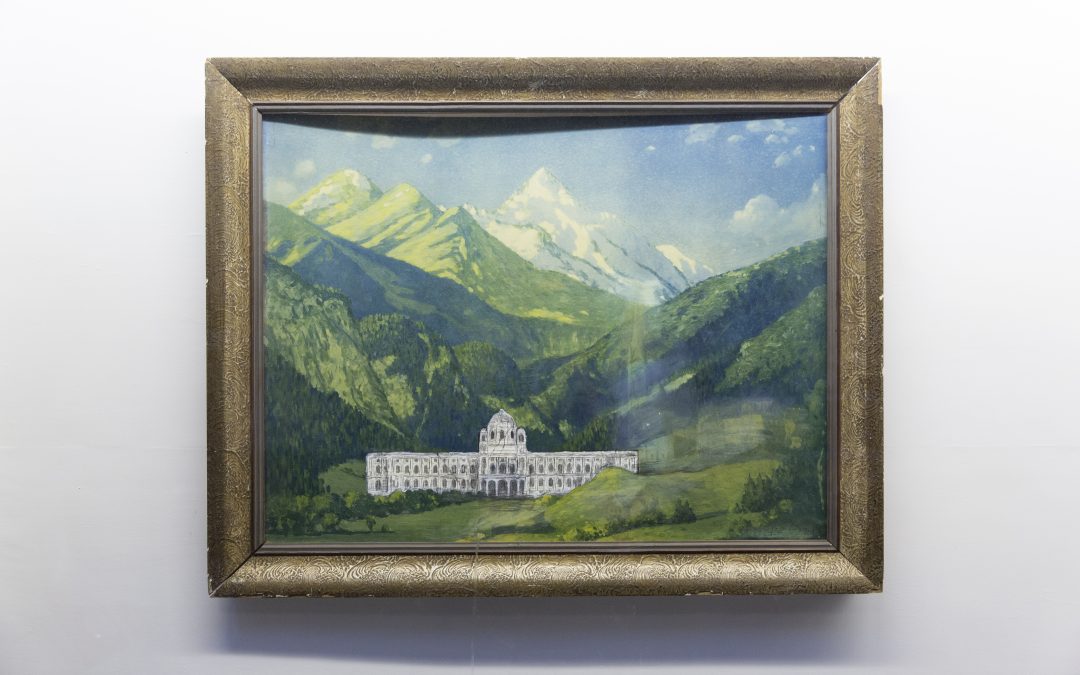 Relicts of Mankind Relicts of Mankind The future is now, the end of the world has passed. The short story of mankind is over, flora and fauna have peacufully re-conquered the Earth again. Only fragments of the history have remained from the eyeblink of once powerful human civilication. Britta Benno exhibits a cohesive series of hybrid-painting, drawn-animation and site-specific drawings combined with drawings made especially for the collaborative project at Kulturdrogerie. The repeatetly depicted architectural object, Naturhistorisches Museum Wien located at a dystopical urban landscape after the imagined extinction of human beings, symbolizes transience of power, culture, money, tradition, religion, business and memorisation. Drown or fell under ground museum has lost all the layers of hierarchical power systems men once created in the need of possessing all the nature and land, and becomes just a meaningless relict in a jungle of future. Maybe some creatures use it now as a cave or a nest? Text: Britta Benno Photos: D. Shammas — 15.12.2018 – 17.12.2018 a is missing Britta Benno, Carina Emery, Demetris Shammas opening: Saturday, Dec. 15th, 7 pm exhibition: Dec.16th and 17th, 4 – 7 pm A is the beginning of an orderly system, the first point in a sequence of points connected by a rational line; a line that is consistent with the passage of time and the attachment of meaning. Britta Benno, Carina Emery, and Demetris Shammas deconstruct within their works the succession of events that usually take place in a linear manner, to find a pattern that is a rather layered one, one of overlap, one of things happening synchronously or inversely. Gestures in...
Relicts of Mankind Relicts of Mankind The future is now, the end of the world has passed. The short story of mankind is over, flora and fauna have peacufully re-conquered the Earth again. Only fragments of the history have remained from the eyeblink of once powerful human civilication. Britta Benno exhibits a cohesive series of hybrid-painting, drawn-animation and site-specific drawings combined with drawings made especially for the collaborative project at Kulturdrogerie. The repeatetly depicted architectural object, Naturhistorisches Museum Wien located at a dystopical urban landscape after the imagined extinction of human beings, symbolizes transience of power, culture, money, tradition, religion, business and memorisation. Drown or fell under ground museum has lost all the layers of hierarchical power systems men once created in the need of possessing all the nature and land, and becomes just a meaningless relict in a jungle of future. Maybe some creatures use it now as a cave or a nest? Text: Britta Benno Photos: D. Shammas — 15.12.2018 – 17.12.2018 a is missing Britta Benno, Carina Emery, Demetris Shammas opening: Saturday, Dec. 15th, 7 pm exhibition: Dec.16th and 17th, 4 – 7 pm A is the beginning of an orderly system, the first point in a sequence of points connected by a rational line; a line that is consistent with the passage of time and the attachment of meaning. Britta Benno, Carina Emery, and Demetris Shammas deconstruct within their works the succession of events that usually take place in a linear manner, to find a pattern that is a rather layered one, one of overlap, one of things happening synchronously or inversely. Gestures in...
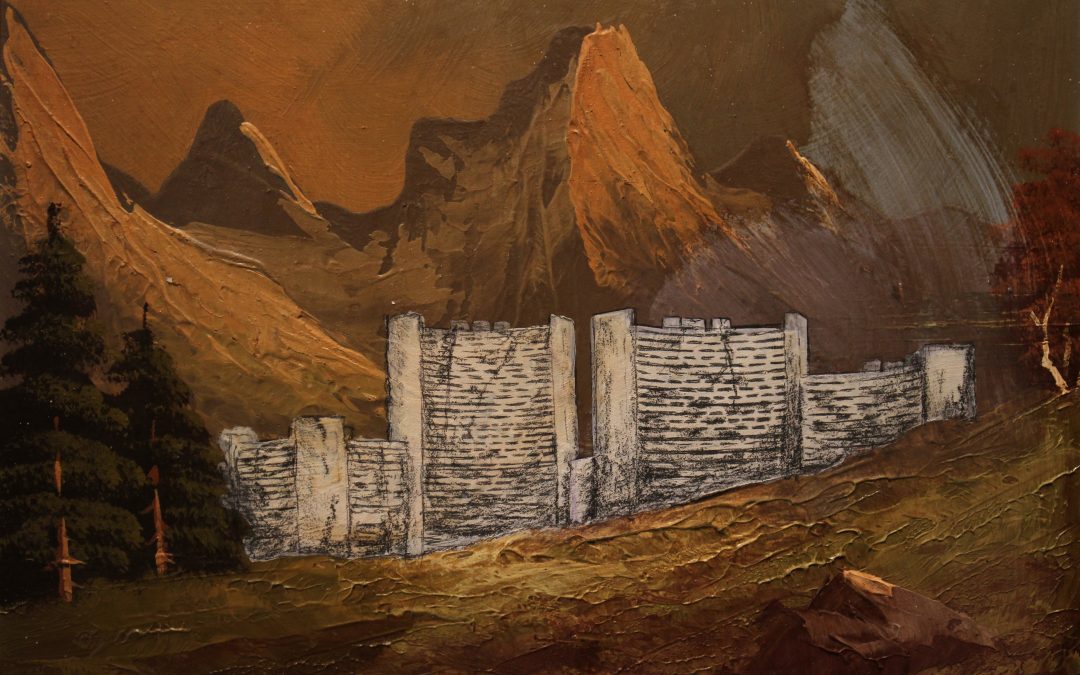 Britta Benno exhibits works from the series made especially for the residency in Vienna, though it derives from the city-specific works the artist have done in Tallinn, too. The series of adapted paintings combined with drawings and other graphics, titled “Dystopic Austria”, depicts urban landscapes after the imagined extinction of human beings. Paintings bought at flea markets in Vienna were appropriated by the artist and modified through the techniques of collage and manual montage. These works can be described as hybrid historical paintings for the future. The artist places images of buildings – reproductions, drawings, etc. – in Biedermeier-like kitschy landscapes of the existing paintings. Images of houses, people, and other figures, which these re-used paintings once contained, were erased, deleted, and overpainted. Their absence highlights the all-conquering power of nature. The depicted buildings are recognisable – they are the ones currently symbolizing power, culture, money, tradition, religion, business, and other institutions. The works remind us that sometime in the future all those buildings may lose their meaning and become old ruins – leftovers of once powerful civilisations. The aesthetics of the images might even evoke a ‘romantic’ kind of nostalgia. What could be described as ‘Ruinenlust’ – the excitement or pleasure that comes from seeing old ruins – reveals a self-ironic stance, common in contemporary societies. In a more sinister way, the project points out the negligence and destruction of the environment and nature achieved through the still withstanding capitalist system. The popular media and news reports present us with dystopic imaginary on daily basis. Yet, one rarely dares to ask: Have we become completely desensitised? Are we oblivious...
Britta Benno exhibits works from the series made especially for the residency in Vienna, though it derives from the city-specific works the artist have done in Tallinn, too. The series of adapted paintings combined with drawings and other graphics, titled “Dystopic Austria”, depicts urban landscapes after the imagined extinction of human beings. Paintings bought at flea markets in Vienna were appropriated by the artist and modified through the techniques of collage and manual montage. These works can be described as hybrid historical paintings for the future. The artist places images of buildings – reproductions, drawings, etc. – in Biedermeier-like kitschy landscapes of the existing paintings. Images of houses, people, and other figures, which these re-used paintings once contained, were erased, deleted, and overpainted. Their absence highlights the all-conquering power of nature. The depicted buildings are recognisable – they are the ones currently symbolizing power, culture, money, tradition, religion, business, and other institutions. The works remind us that sometime in the future all those buildings may lose their meaning and become old ruins – leftovers of once powerful civilisations. The aesthetics of the images might even evoke a ‘romantic’ kind of nostalgia. What could be described as ‘Ruinenlust’ – the excitement or pleasure that comes from seeing old ruins – reveals a self-ironic stance, common in contemporary societies. In a more sinister way, the project points out the negligence and destruction of the environment and nature achieved through the still withstanding capitalist system. The popular media and news reports present us with dystopic imaginary on daily basis. Yet, one rarely dares to ask: Have we become completely desensitised? Are we oblivious...






